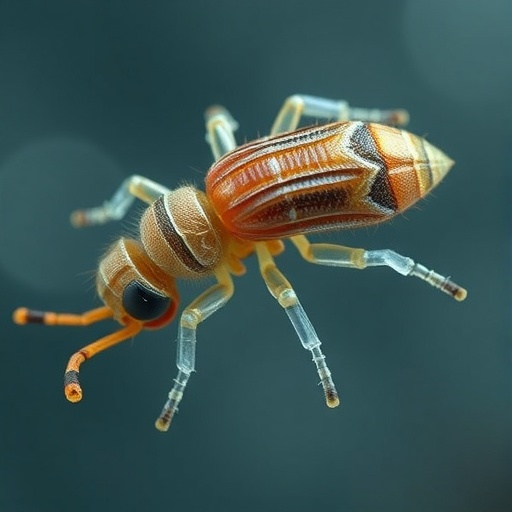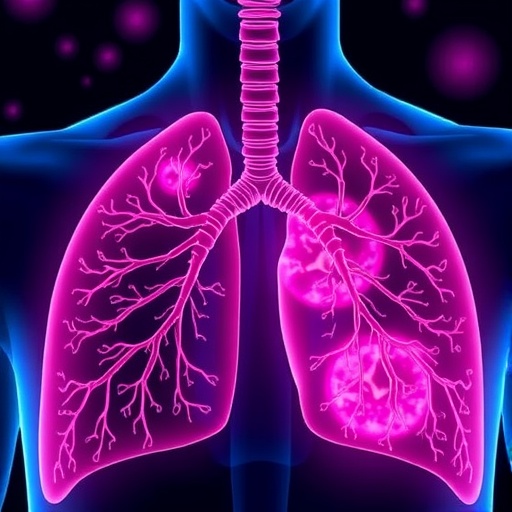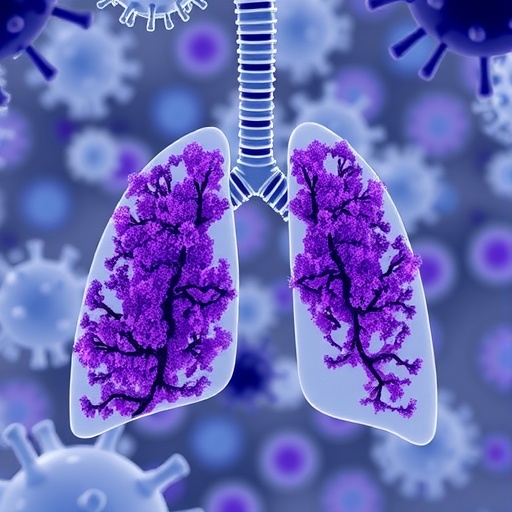In the quest to unravel the enigmatic timeline of death, the scientific community has long sought reliable indicators to estimate the postmortem interval (PMI) — the time elapsed since death occurred. Recent pioneering research published by Chen, Xia, Zhang, and colleagues, delves deep into the microscopic battleground of cadaveric decay, revealing how age and insect activity intricately influence the microbial communities on decomposing human remains. This breakthrough study promises not only to refine the accuracy of PMI estimation but to also expand forensic science’s toolkit with novel biological markers that evolve predictably through death’s progression.
The decomposition of a body is a complex biochemical process shaped by a multitude of factors, ranging from environmental conditions to the intrinsic biological makeup of the deceased. Among these factors, microbial communities — consortia of bacteria and fungi that colonize bodily tissues postmortem — have emerged as crucial yet understudied agents of decay. Until recently, the population dynamics of these microbes were considered somewhat random and therefore of limited forensic value. However, Chen et al.’s work uncovers systematic patterns in microbial succession driven by the victim’s age and the presence of scavenging insects, thereby introducing a new dimension of precision in PMI assessment.
From the outset, this study focused on understanding how chronological age influences the initial microbial landscape of the cadaver and its evolution during decomposition. The researchers observed that individuals of different age groups harbor distinct microbial communities prior to death, shaped by age-related changes in immune system function, skin physiology, and internal microbial populations. These age-specific microbial signatures, persisting after death, play a pivotal role in cadaver community dynamics. Remarkably, the study demonstrated that microbial succession rates vary systematically with age, providing a novel biological clock that could be exploited in forensic investigations.
In addition to intrinsic host factors, extrinsic variables such as insect colonization significantly modulate the microbial succession on a corpse. Insects, particularly necrophagous species like blowflies and beetles, rapidly colonize decomposing remains, feeding on soft tissues and introducing their own microbiota into the ecosystem. Chen and colleagues meticulously documented how these insects alter the microbial consortium by introducing new microbial species and accelerating tissue breakdown. This interaction between insects and microbes creates a dynamic, intertwined process that leaves distinctive microbial signatures evolving temporally — signatures that can serve as reliable indicators for determining PMI stages.
The methodology employed was exhaustive and innovative. The team collected cadaver samples across a range of controlled postmortem intervals, varying in the age of the deceased as well as exposure to insect activity. Using high-throughput sequencing techniques, the microbial DNA was profiled with unprecedented resolution. This genomic approach allowed a comprehensive cataloging of bacterial and fungal species, tracking their relative abundances over time. By coupling this data with entomological analyses quantifying insect species and populations, the researchers established robust correlations between microbial shifts and PMI that accounted for both biological and ecological influences.
One of the most striking findings was the identification of microbial taxa that serve as biomarkers for different postmortem phases and host ages. For younger cadavers, certain bacterial genera showed predictable temporal increases, whereas older individuals exhibited accelerated or decelerated patterns, reflecting the interplay of aging immune environments and microbial colonization competence. Similarly, the presence of specific insect species correlated with distinct microbial changes, revealing an intricate ecological succession that could be modeled mathematically to estimate time of death with higher accuracy than previously possible.
The implications of this research extend far beyond academic curiosity; they hold profound practical potential in forensic casework. Traditional PMI estimation techniques, often reliant on gross morphological changes or insect developmental stages, suffer from variability based on environmental conditions and are limited in their precision. By integrating microbial community profiling with entomological data, forensic scientists can achieve a multi-dimensional, biologically grounded measure that refines the PMI window. This heightened precision could prove invaluable in criminal investigations where pinpointing time of death is central to constructing legal narratives.
Moreover, the study revealed that microbial succession follows a predictable trajectory irrespective of environmental fluctuations, provided that insect activity is appropriately accounted for. This consistency suggests that microbial clocks could be standardized as forensic tools, amenable to automation and integration with emerging technologies such as machine learning algorithms for pattern recognition. The ability to decode the “microbial time signature” encoded on decomposing remains heralds a paradigm shift in forensic methodologies, anchoring them firmly in the molecular age.
An intriguing byproduct of the research concerns the ecological roles of postmortem insects and their resident microbiomes. The mutualistic relationships between scavenger species and microbial communities underscore a co-evolved decomposition strategy that optimizes nutrient recycling. By understanding how these organisms interact and modulate each other’s presence on cadavers, scientists can glean insights into broader ecosystem processes, potentially influencing legal frameworks governing environmental and wildlife conservation.
The laboratory conditions of this study also highlighted challenges in standardizing PMI estimates worldwide, given that microbial and insect species composition varies geographically. Chen et al. advocate for localized microbial baseline studies to calibrate forensic models specific to regional ecologies. This call for region-specific data repositories aligns with a growing movement to establish global microbial and entomological databases, fostering international collaboration and knowledge-sharing to enhance forensic accuracy universally.
Another technical advance presented in the paper is the use of metagenomic sequencing coupled with machine learning to sift through complex microbial datasets and identify key taxa with predictive power. This approach addresses the problem of overwhelming biological complexity inherent in decomposing remains. By harnessing computational tools, the study paves the way for user-friendly forensic software that practitioners can deploy in routine case analyses, moving microbial PMI estimation from research labs to crime scenes.
The study furthermore elaborates on how age-dependent physiological changes influence the initial microbial profile postmortem. For older cadavers, immunosenescence — the gradual decline of immune function with age — appears to create niche environments favoring opportunistic bacteria, altering the decomposition trajectory. Accounting for these nuances can prevent misestimations arising from general models that neglect host biology. Thus, tailored algorithms incorporating age factors would enhance reliability and specificity in PMI estimations.
Future research directions outlined by the authors emphasize longitudinal studies capturing seasonal and climatic variability to further validate microbial-insect PMI models. There is also an expressed interest in exploring how other factors, like cause of death, medication use, or underlying diseases, impact microbial progression during decomposition. These explorations will enrich the forensic understanding of human decomposition and potentially discover additional biomarkers to troubleshoot cases with ambiguous timelines.
Altogether, Chen, Xia, Zhang, and their team’s groundbreaking work crafts a comprehensive narrative of postmortem microbial ecology influenced by both age and insects, culminating in sophisticated tools to pinpoint time since death. Their integration of cutting-edge molecular biology, entomology, ecology, and computational sciences forms a compelling blueprint for the future of forensic investigations. With rigorous validation and global collaboration, microbial PMI estimation could swiftly become standard forensic protocol, transforming the precision and reliability of death investigations worldwide.
As forensic science embraces these microbial markers and insect-mediated ecological insights, the battlefield of decomposition will no longer be a clandestine realm of uncertainty. Instead, it will manifest as a readable biological record, distinctly timestamped by invisible armies of microbes and their insect allies. This revolution in death science, born from meticulous research, heralds a new era where every body written off as silent speaks volumes through its microbial companions, illuminating the ticking clock of mortality with scientific clarity.
Subject of Research: The influence of age and insect factors on cadaver microbial communities and their application to postmortem interval estimation.
Article Title: The impact of age and insects factors on cadaver microbial communities and application to postmortem interval Estimation.
Article References:
Chen, S., Xia, Y., Zhang, X. et al. The impact of age and insects factors on cadaver microbial communities and application to postmortem interval Estimation. Int J Legal Med (2025). https://doi.org/10.1007/s00414-025-03621-z
Image Credits: AI Generated
Tags: advancements in forensic entomologybiological markers in forensic sciencecadaveric decay researchenvironmental influences on microbial growthfactors affecting body decompositionforensic microbiology advancementsimplications for forensic investigationsinfluence of age on decaymicrobial communities in decompositionpostmortem interval estimationrole of insects in cadaver decaysystematic patterns in microbial succession





